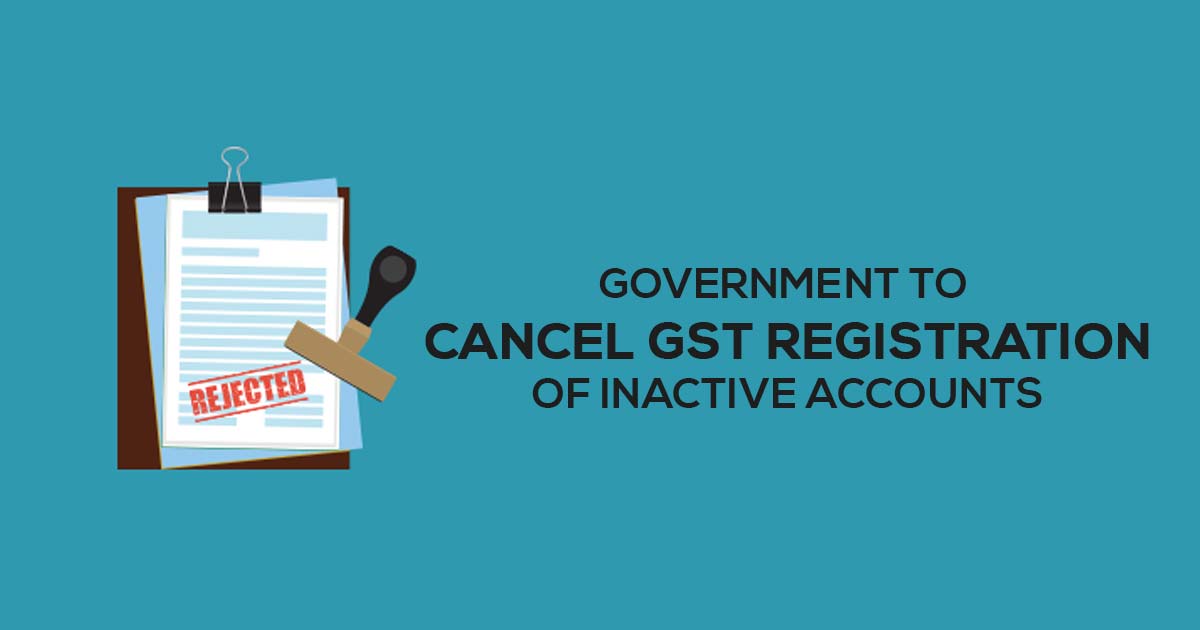In a move to deregister dormant GST assessees, the Central Board of Indirect Taxes and Customs (CBIC) field officers have been assigned with the task to issue show-cause notices and complete the formalities at the earliest. Reportedly, nearly 12 lakh Goods and Services Tax (GST) assessees stand to lose GST Registration post the CBIC’s move.
Why Deregister?
When GST was introduced in July 2017, it was expected that India’s taxpayer base would grow by manifolds. This was mainly attributed to the GST Network that digitized tax payment system and brought more transparency and accountability to the tax system.
In its early days, GST also mandated re-registration of taxpayers registered under the erstwhile VAT regime. Since its inception, GST witnessed an accelerated growth in taxpayer base. Data shows that the registered taxpayers under GST have increased from approx 73 Lakh in August 2017 to nearly 97 Lakh in 2017. This a great yearly growth and it transpired to a number of tax filings too. The tax returns filed per year grew three times by August 2018. But so did the count of the assessees who failed to file returns. The main reason is, of course, the new threshold for Service Tax and Central Excise.
In the erstwhile VAT, the threshold for registration varied with States. This is no longer the case under GST. Hence, under the new universal threshold of ₹20 lakh (₹10 lakh in some States), most people who are registered under GST do not cross the threshold lines in their annual turnovers. Under VAT/Sales Tax this was as low as ₹1 lakh.
Moreover, GST had voluntary registration provisions for taxpayers who do not meet the GST Threshold limit. However, these dormant taxpayers should have canceled provisional registration by now. But have failed to comply till now.
Demonetization and GST Taxpayer Base
Tax Experts believe that demonetization formalized economy and increased taxpayer base in the GST regime. Government data says that the total number of registered taxpayers under GST has now crossed the 1 Crore mark. A major portion of this populace does not file returns because of the high threshold values. This has prompted the Ministry to identify those who do not file returns but are still registered under GST. An effective tax base will give a clearer picture of the GST impact and also increase GSTN efficiency.
Currently, over 1 crore registered assessees on the GST Network (GSTN), but the number of those who file returns is much less.
GST was implemented from July 1 last year. In the very first year, the number of registered assessees increased by 72.5 percent to 1.14 crore. Of these, 66.17 lakh were existing taxpayers, that is, those registered under previous VAT/Sales Tax, Central Excise or Service Tax regime; the remaining were new ones. The Government believes that the new assessees came into the net as a result of demonetization, which resulted in the formalization of the economy, prompting more and more people to get registered.
Read Also: Resistance Against GST Raids Would Land Accused Behind Bars
Another Finance Ministry official said that while a wider tax base is good, there is also a need to ensure an ‘effective’ tax base; the latest initiative will help achieve that. This kind of a tax base will serve two purposes: it will lighten the burden on the GSTN, and it will give a real picture of the indirect tax regime.











What is difference between cancelled and inactive gstin
“Cancelled GSTN can not be active again but Inactive GSTN can become active again”